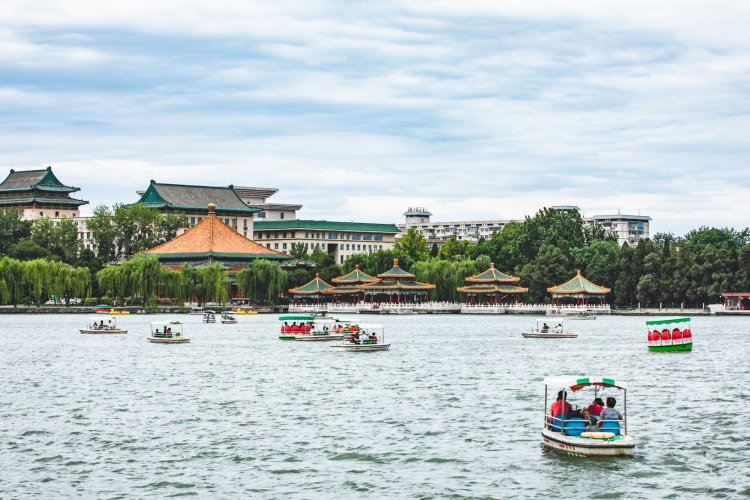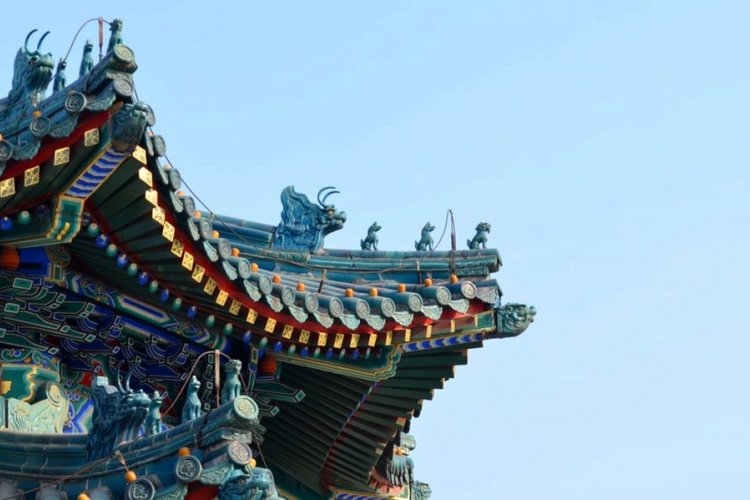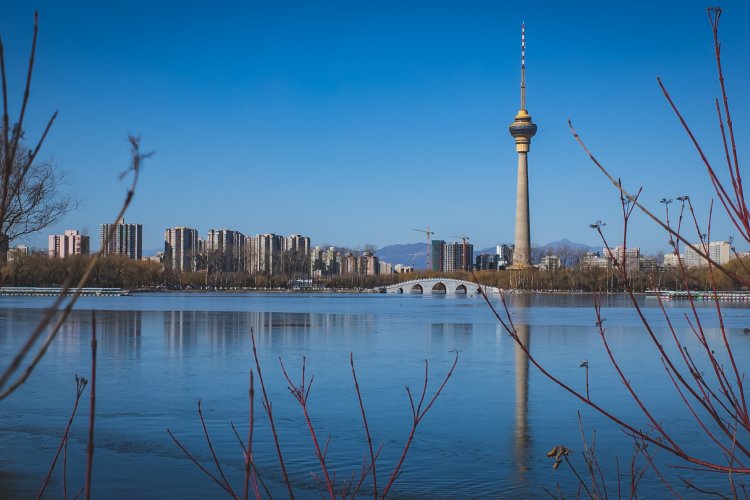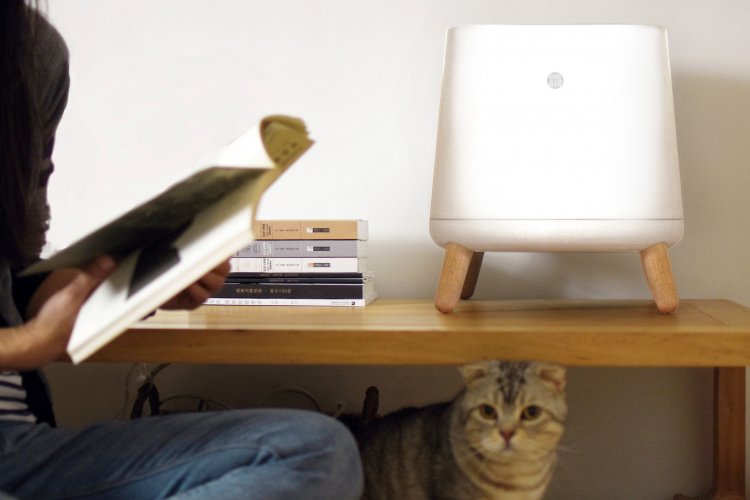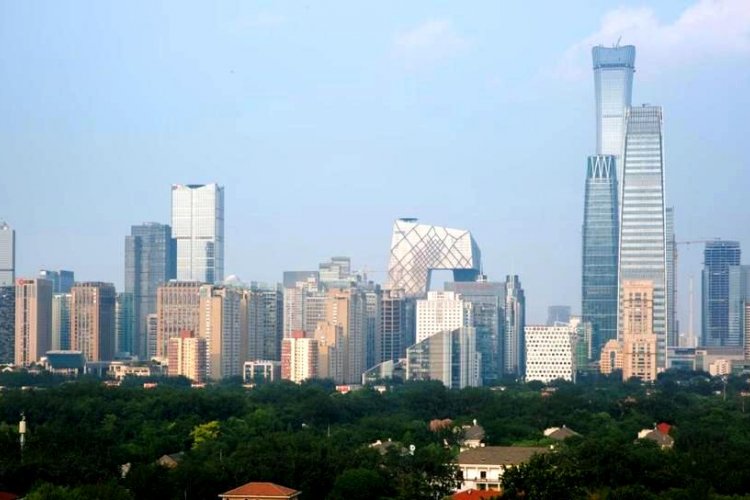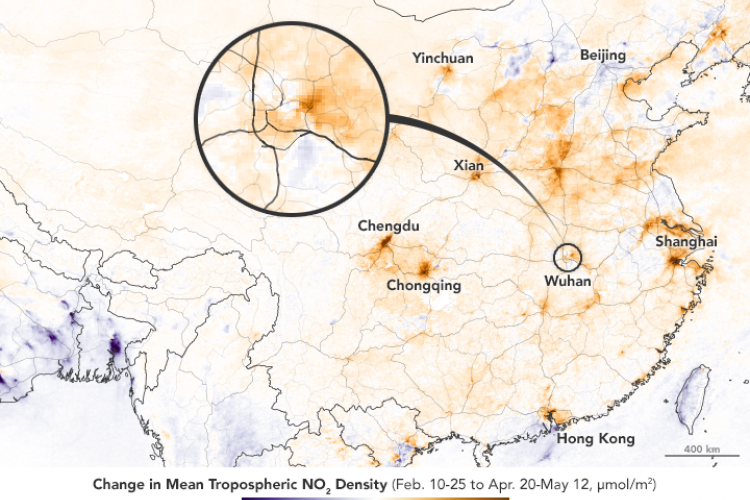Here's a more up-to-date photo taken at ground level near Guomao 21 hours ago by Flickr user China Chas
Beijing's Pollution is so Bad, It Can Be Seen From Space
We posted this over on BeijingKids a few days ago: The nasty layer of smog that has cloaked our city over the past few days may have blown away, but this of course does not mean that yet another cloud of noxious fumes won't be rolling in once the winds die down.
And despite official news outlets touting Beijing's "decreasing pollution levels", studies still show that our city's pollution problem is, in fact, directly leading to premature deaths.
According to Caixin.net:
Air pollution was linked to at least 8,572 premature deaths across four major cities in 2012, in a study by Peking University and Greenpeace published December 18. The study also said smog in Chinese cities caused a total of 6.8 billion yuan in economic losses.
... "PM2.5 is putting public health at high risk every day, but worse still, if we follow the current official plans we would need to wait 20 years to get to the national standard," said Greenpeace climate and energy campaigner Zhou Rong.
... China has seen numerous studies on air quality in the past. In 2007, a joint study by China's State Environmental Protection Administration, the former incarnation of the Ministry of Environment, and the World Bank estimated that each year between 350,000 to 400,000 deaths are attributable to air pollution.
After starting to release PM 2.5 statistics (the same standard been used by the US Embassy air quality monitoring system) in October, the Beijing Environmental Protection Bureau announced a new Air Quality Index (AQI) System in December that in theory would better inform the public on day-to-day pollution levels.
According to The Global Times:
The Beijing Environmental Protection Bureau's announcement of the AQI on Saturday did not explain how the new index would be calculated, but noted that when it hit the 200 level ("serious"), safety measures kick in, including warning old people and children to limit outdoor activities. At 300 ("severe"), schools should cancel outdoor exercise. At 500 ("extreme"), all outdoor sporting events should be cancelled, and the government should cut 30 percent of the government vehicles on the road.
Plans have also been announced to continue taking high-polluting cars off the road but it remains to be seen how seriously these public safety measures will be enforced and what additional measures would be instituted when the air gets "Crazy Bad" - some progress should result, but judging by how initiatives like the capital's indoor smoking ban have gone overall, don't (or do?) hold your breath for consistently pollution-free skies in Beijing any time soon.
Here's an update as of Sunday Morning, January 13:
Unless you have been away or living in an isolation chamber you've no doubt experienced Beijing's asphyxiating air pollution over the weekend. The New York Times reports that as of 8pm Saturday, the AQI had reached a "jaw-dropping 755" on the US Embassy AQI monitor and as of 10am this morning the levels were still hovering at a "Hazardous 338." Meanwhile the official Beijing Environmental Protection Bureau site was reporting levels in excess of 436 for parts of south Beijing.
The cloud of smog over Northern China is so bad that it can actually be seen from space, but unfortunately there it remains difficult to pinpoint why, exactly, things have gotten beyond "Crazy Bad." Car exhaust, burning coal and factory burn-off are probably the main culprits but the problem is still rooted in a lack of clear oversight and regulation. Until the latter gets straightened out I'm afraid we're in for more days like today.
Related stories :
Comments
New comments are displayed first.In other words, this weekend is bad but its certainly been as bad in the past (we just didn't know the numbers back then).
Based on my very unscientific recollections, I remember plenty of blue sky days in BJ the late 90s and early 2000s, but the air quality degraded similarly abyssmal level in 2005-2007 - and then seemed to improve somewhat in the years around the Olympics in 2008.
As for more Blue Sky Days - I would even dare to venture that there probably was some improvement in the past couple of years in frequency when compared to the mid-2000s, but it doesn't mean that the "Crazy Bad" days have gotten any less crazy and any less bad.
I read a while back that many factories around Beijing cannot afford to implement the necessary controls for emissions - can't find the citation, but if anyone out there has a link, please feel free to comment.
Here are some other related links:
http://www.beijing-kids.com/blog/beijingkids/2012/06/14/Researcher-Explains-Why-the-Air-Sometimes-Goes-Crazy-Bad
http://www.beijing-kids.com/blog/beijingkids/2012/06/14/Researcher-Explains-Why-the-Air-Sometimes-Goes-Crazy-Bad
http://www.beijing-kids.com/forum/2012/07/31/Beijing-to-shut-down-all-coal-plants-in-the-metro-area-by-2014-will-this-finally-cl
On the last one - I really hope they make good - but given the dependence on coal - hard to see how they can do this in due time.
Maybe clean coal is the answer?
Meanwhile New York Times correspondent James Wang (@comradewang) points out that "Xinhua [via Global Times] continues to call the pollution across North China "dense fog."
a lot of commentators are saying the indexes are higher than ever this weekend -- numbers in the 700s and 800s -- I believe that this is due to the fact that the monitors used to stop at 500 (which the people who built the machinese probably assumed "it couldn't ever get worse than that".
In other words, this weekend is bad but its certainly been as bad in the past (we just didn't know the numbers back then).
Now with more transparency on the Chinese side (reporting PM 2.5 is now par for the course in Beijing, and reporting on the issue is now more open) I expect the guages have been adjusted
Slight technical problems with making corrections to the post right now but just wanted to point out that the BJKids post was written on Jan 8, the one clear day we had last week, while the sentence in the last paragraph should read "The cloud of smog over Northern China is so bad that it can actually be seen from space, but unfortunately there it remains difficult to pinpoint why, exactly, things have gotten beyond "Crazy Bad."
I blame the smog.
Hope everyone can breathe easier later today.

